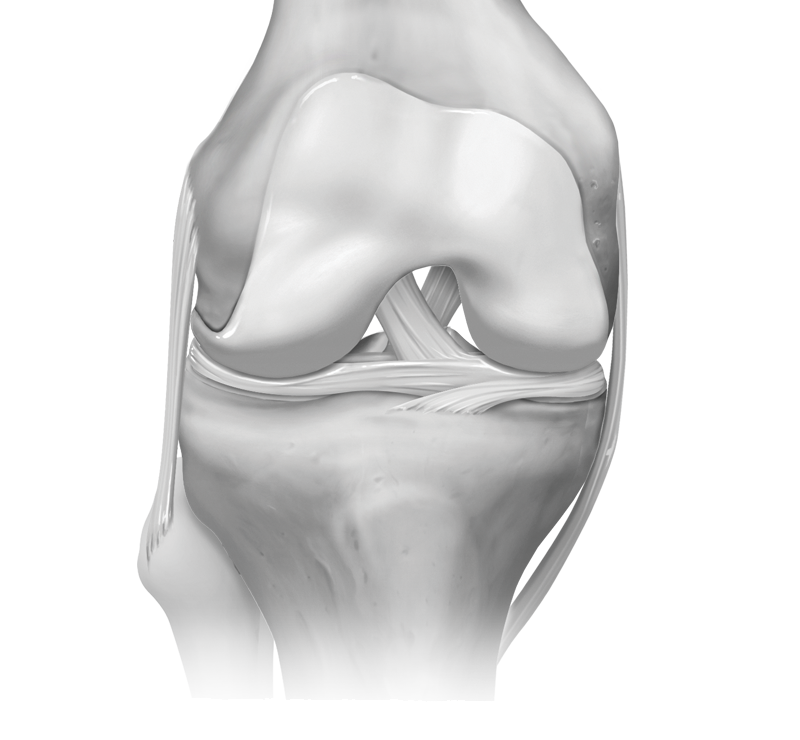- drsamirkarmali@gmail.com
Ligaments

The ligaments of the knee are essential structures for the stability and proper functioning of this complex joint. There are four main ligaments in the knee: the anterior cruciate ligament (ACL), the posterior cruciate ligament (PCL), the medial collateral ligament (MCL), and the lateral collateral ligament (LCL).

The anterior cruciate ligament (ACL) and the posterior cruciate ligament (PCL) cross each other inside the knee joint, providing rotational and anteroposterior stability. The ACL prevents the tibia from sliding forward in relation to the femur, while the PCL prevents the opposite movement, stopping the tibia from sliding backward in relation to the femur.
The medial collateral ligament (MCL) is located on the inner side of the knee, helping to prevent excessive valgus movements, which means it prevents the knee from bending inward. Meanwhile, the lateral collateral ligament (LCL), located on the outer side of the knee, provides stability against varus movements, meaning it prevents the knee from bending outward.
Symptoms of ligament injury
Problems with the knee ligaments can cause a variety of symptoms, including pain, swelling/edema, limited range of motion, or instability in the joint. These symptoms can vary in intensity depending on the severity of the injury or pathology and can have a significant impact on quality of life and the ability to resume sport activities when properly and timely treated.
Minimally invasive surgeries to treat knee ligaments
There are several minimally invasive surgeries that can be performed to treat injuries to the knee ligaments. One of the most common techniques is the reconstruction of the anterior cruciate ligament (ACL), in which the torn ligament is replaced with a tendon graft from the patient or from a donor. This procedure is often performed using an arthroscopic approach, in which small incisions are made in the skin and specialized instruments are inserted to carry out the ligament reconstruction.
In addition to ACL reconstruction, other minimally invasive surgeries can be performed to treat injuries to the other knee ligaments. These may include repairing partial injuries of the collateral ligaments, techniques for reinforcing ligaments with sutures or grafts, and other specific interventions depending on the nature and severity of the injury.
The advantage of minimally invasive surgeries is that they typically have shorter recovery times, less postoperative pain, and a lower risk of complications compared to traditional surgical procedures. However, the decision on the type of surgery to be performed should be made in consultation with a specialized orthopedic surgeon, who will assess the severity of the injury and the individual needs of each patient.
Do you have any questions?
Dr. Samir Karmali provides a detailed assessment and a personalized treatment plan for his patients with knee injuries or pain, aiming for recovery and a return to physical activity. If you want to know more about the available treatment options, do not hesitate to get in touch to schedule a appointment.
Schedule an appointment
Do you want to know more?
I am Dr. Samir Karmali, an orthopedic doctor and knee specialist surgeon. If you have any questions about your knee injury and the most suitable treatment options for you, I am available to help. Fill out the form or send an email to drsamirkarmali@gmail.com. My goal is to clarify your doubts with professional guidance tailored to your specific situation. It will be a pleasure for me, after evaluating your clinical case, to offer you the most appropriate treatment to restore the health of your knee.

Make your appointment
Make your appointment online quickly and conveniently through our website or available contacts.